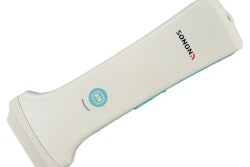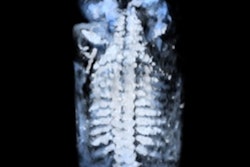Dr. Richard Barr, PhD, a professor of radiology at Northeast Ohio Medical University in Rootstown, and colleagues conducted two trials that included 499 patients with at least one focal liver lesion requiring workup. All patients underwent an unenhanced ultrasound exam, followed by a contrast-enhanced exam that used 2.4 mL of Bracco Diagnostics' Lumason contrast agent, which was cleared for this use by the U.S. Food and Drug Administration (FDA) in April.
The images were read by onsite investigators and also three offsite readers who were blinded to any clinical data. Barr's group determined the diagnostic performance of the two exams using tissue pathology/histology (when a liver biopsy could be performed) or six-month follow-up with contrast-enhanced CT or MRI.
Of 499 lesions, 256 were benign and 243 were malignant. The sensitivity of contrast-enhanced ultrasound for onsite readers was 89.3%, compared with 37% for unenhanced ultrasound; specificity was 84%, compared with 21.5%; and accuracy was 86.6%, compared with 29.1%.
For offsite readers, the sensitivity of contrast-enhanced ultrasound was 72.4%, compared with 43.6% for unenhanced ultrasound; specificity was 80.5%, compared with 34%; and accuracy was 76.6%, compared with 38.7%.
No serious adverse events related to the use of the contrast agent were reported, according to Barr's team.
The study results show that contrast-enhanced ultrasound with a 2.4-mL dose of Lumason is safe and may be useful to improve characterization of focal liver lesions when unenhanced ultrasound is inconclusive, the group concluded.



















